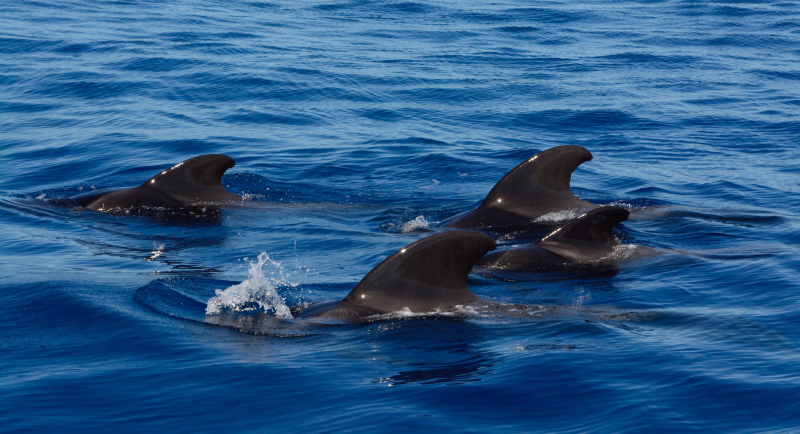Fin Whale
The fin whale, scientifically known as Balaenoptera physalus, is a magnificent marine mammal that claims its place among common animals starting with the letter "F." As the second-largest species of whale and the second-largest living animal on Earth, the fin whale commands attention for its impressive size, streamlined appearance, and remarkable aquatic habits.
These majestic creatures are found in oceans across the globe, inhabiting both cold and warm waters. Fin whales are known for their distinctive features, including a sleek, streamlined body that can reach lengths of up to 85 feet (26 meters) and a striking asymmetrical coloration on their lower jaw. Their bodies are predominantly grayish, and on the right side of their jaw, they exhibit a unique pattern of light-colored markings called "chevrons."
One of the key characteristics of fin whales is the prominent dorsal fin located towards the rear of their bodies, which inspired their common name. Despite their massive size, fin whales are known for their agility and can swim at impressive speeds, reaching up to 25 miles per hour (40 kilometers per hour). This speed, coupled with their long, slender bodies, makes them adept swimmers and efficient hunters.
Fin whales are baleen whales, meaning they use comb-like baleen plates in their mouths to filter small prey, such as krill and small fish, from the water. Their feeding method, known as lunge feeding, involves accelerating through a school of prey with their mouths wide open, engulfing large volumes of water and prey. As they close their mouths, the water is expelled through their baleen plates, trapping the prey inside for consumption.
These marine giants are highly vocal and communicate through a series of low-frequency sounds, including moans and pulses. Their distinctive calls are crucial for navigation, locating mates, and coordinating group activities. Despite their social nature, fin whales are often found traveling solo or in small groups.
















